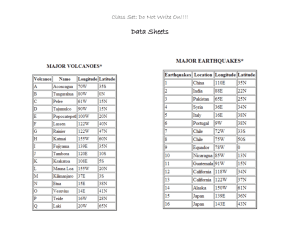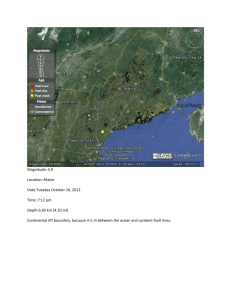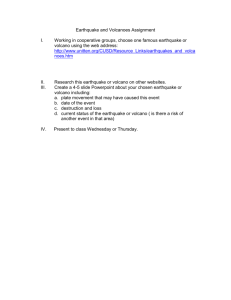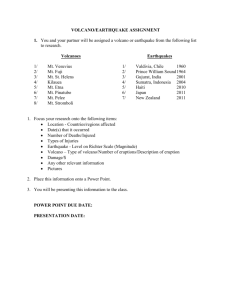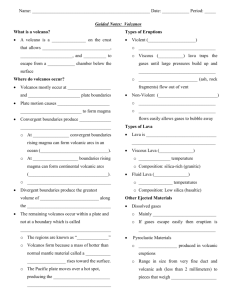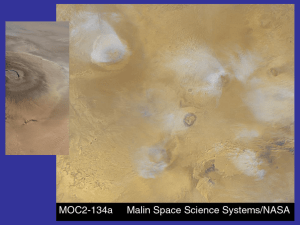Study Guide for Natural Disasters Unit:
advertisement
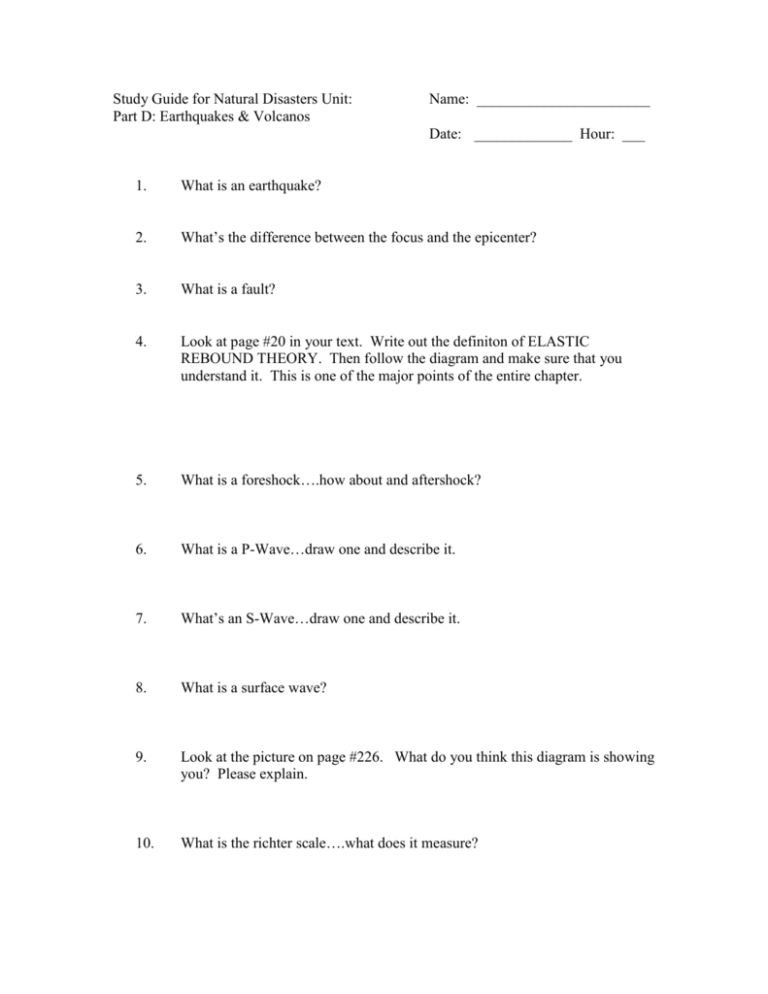
Study Guide for Natural Disasters Unit: Part D: Earthquakes & Volcanos Name: _______________________ Date: _____________ Hour: ___ 1. What is an earthquake? 2. What’s the difference between the focus and the epicenter? 3. What is a fault? 4. Look at page #20 in your text. Write out the definiton of ELASTIC REBOUND THEORY. Then follow the diagram and make sure that you understand it. This is one of the major points of the entire chapter. 5. What is a foreshock….how about and aftershock? 6. What is a P-Wave…draw one and describe it. 7. What’s an S-Wave…draw one and describe it. 8. What is a surface wave? 9. Look at the picture on page #226. What do you think this diagram is showing you? Please explain. 10. What is the richter scale….what does it measure? 11. Read section 8-3 (Pages 229-232). It speaks of earthquake destruction. Please rank the “aftereffects” of earthquakes and put them in order of the most damage caused to the least damage caused. We’ll discus this in class. 12. Look at the picture on page #219 (bottom right)…what happened to the rows of crops? 13. What is a volcano? 14. What does viscosity have to do with the severity of the eruption? 15. What does the amount of dissolved gases have to do with the severity of the eruption? 16. What is pyroclastic material? 17. Draw the anatomy of a volcano in the space below. Make sure to label it properly. 18. What is the difference between a crater and a caldera? 19. There are 3 types of volcanos, DRAW each type, the DESCRIBE each type. _______________: _______________: _______________: 20. When people think of volcanos, they think of rivers of lava like we always see on TV. What are some other ways that volcanos effect the environment. (Think of air and water).


